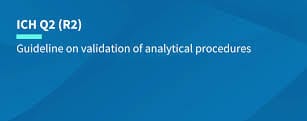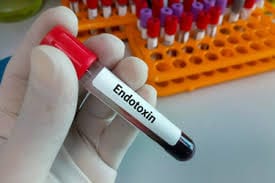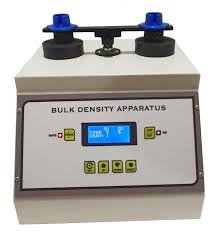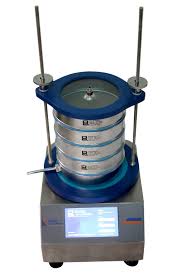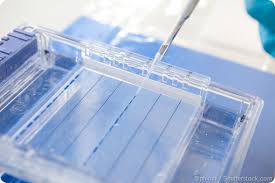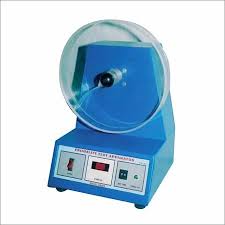|
Getting your Trinity Audio player ready... |
Validation Of Analytical Procedures Q2(R2)
Introduction to Analytical Procedure Validation
Validation Of Analytical Procedures : The validation of analytical procedures is a critical step in ensuring that an analytical method meets the required standards for regulatory purposes, especially during the submission of registration applications. This guideline aims to provide detailed considerations and methodologies for validating analytical procedures that are part of these applications. The validation process helps in demonstrating that the analytical procedure is reliable, reproducible, and fit for its intended purpose. Validation is a continuous process, as described in the ICH Q14, which emphasizes the development and life-cycle management of analytical procedures.
The guidelines also include the ICH Q2(R2) principles on the selection and evaluation of various validation tests. This document provides essential definitions and terms to bridge the gaps between the different compendia and regulatory documents from ICH member authorities. The main goal of analytical procedure validation is to confirm that the procedure produces results that are both accurate and precise, reflecting the true nature of the sample being analyzed. In addition, the guideline extends to cover the validation process for various types of analytical methods, including assays, potency, purity, and impurity tests, ensuring the consistency and reliability of results across different testing stages.
1. Objective: Validation Of Analytical Procedures
The primary objective of this guideline is to offer a structured approach to validating analytical methods used in the release and stability testing of commercial drug products and substances. This validation process ensures that the analytical procedure is appropriate for its intended purpose in ensuring drug quality, safety, and efficacy. Furthermore, the guideline stresses the importance of applying a risk-based approach to testing and validation, as described in the ICH Q10 Pharmaceutical Quality System.
2. Scope
This guideline is applicable to all analytical procedures used in the release and stability testing of pharmaceutical products, including drug substances and drug products. In addition, it applies to other analytical techniques that are part of a broader control strategy, as outlined in ICH Q10. The guideline is applicable across various phases of drug development, from clinical testing to market release, and applies to both qualitative and quantitative analyses used in routine and regulatory testing.
The scope of the guideline includes a wide variety of analytical procedures, such as assays, potency, purity, impurity tests, and identity tests, which are essential in the manufacturing and quality control processes of drug substances and products. By ensuring that the procedures are thoroughly validated, the pharmaceutical industry can maintain consistency, reliability, and regulatory compliance throughout the lifecycle of a product.
3. Validation Tests, Methodology, and Evaluation
This section outlines the experimental methodologies that are crucial for evaluating the performance of an analytical procedure. These methodologies are grouped according to the primary performance characteristics dictated by the design of the analytical procedure. Several types of performance characteristics are evaluated during the validation process, each addressing specific aspects of the procedure’s reliability and suitability. In some cases, multiple characteristics may be evaluated using a single data set, but it is important that the approaches are clearly justified to ensure compliance.
3.1 Specificity/Selectivity
General Considerations:
Specificity or selectivity refers to the ability of an analytical procedure to differentiate the analyte from other substances present in the sample matrix. The specificity of a method can be demonstrated by showing the absence of interference from other components, such as impurities, degradation products, or other substances that might be present in the sample. In certain cases, the underlying scientific principles of the procedure itself may inherently ensure its specificity, and thus additional experimental validation may not be required.
- Absence of Interference: Specificity is demonstrated by confirming that the identification or quantification of an analyte is not compromised by other substances in the sample.
- Orthogonal Procedure Comparison: The specificity of an analytical method can also be confirmed by comparing the results obtained using a second, orthogonal method that employs a different measurement principle, offering an independent confirmation of the results.
- Technology-Inherent Justification: In some cases, the technology used for the analytical procedure can inherently guarantee its specificity. For instance, advanced techniques like mass spectrometry or nuclear magnetic resonance (NMR) offer high specificity that may not require further validation.
Recommended Data for Specificity:
Specificity validation is generally demonstrated by performing a series of tests with known reference materials or with samples that include potential interfering substances. Data should include chromatograms, spectra, or electropherograms, clearly identifying relevant components. The key is to ensure that the analytical procedure produces distinct, unambiguous results even in the presence of other substances.
3.2 Range
General Considerations:
The range of an analytical procedure refers to the concentration interval between the lowest and highest measurable results. The validation of the procedure’s range ensures that it operates within this interval with appropriate accuracy and precision. This is determined by assessing the performance of the procedure across various concentrations of analyte, using calibration models and statistical analysis.
- Linear Response: When evaluating the range, it is crucial to establish a linear relationship between analyte concentration and instrument response. Linearity can be assessed by plotting response data and applying regression analysis to determine the slope, intercept, and correlation coefficient.
- Non-linear Response: In cases where a non-linear response is observed, such as with immunoassays or cell-based assays, the relationship between analyte concentration and response may require a non-linear regression model. These models, such as the logistic function, account for S-shaped curves or other non-linear behaviors.
- Multivariate Calibration: In some cases, multivariate calibration techniques are used to handle complex relationships between multiple variables and the quality attribute of interest. This approach is particularly useful for methods that rely on multivariate data, such as spectrometry and chromatography.
Validation of Lower Range Limits:
For methods requiring detection near the lower limits of quantitation, approaches such as signal-to-noise ratio, standard deviation of linear response, or accuracy and precision measurements are employed to confirm the detection and quantification limits.
3.3 Accuracy and Precision
Accuracy:
Accuracy refers to the degree of agreement between the measured value and the true value of the analyte. Validation of accuracy involves comparison with reference materials, spiking studies, or orthogonal procedure comparisons. The accuracy should be assessed across the full reportable range, considering potential sample matrix effects.
- Reference Material Comparison: Accuracy can be demonstrated by comparing results obtained from the analytical procedure to the known values of reference materials.
- Spiking Study: The accuracy of a procedure can also be assessed by spiking a sample with a known quantity of analyte and comparing the measured results to the expected results.
- Orthogonal Procedure Comparison: In some cases, results from the proposed procedure are compared to those obtained using a different, validated procedure.
Precision:
Precision refers to the reproducibility of the analytical procedure. It is evaluated by performing multiple measurements under the same conditions.
- Repeatability: Repeatability is assessed by measuring the same sample multiple times under identical conditions, typically at least nine determinations across the reportable range.
- Intermediate Precision: Intermediate precision evaluates the variation in results when the analysis is conducted under different conditions, such as across different days, analysts, or instruments.
- Reproducibility: While not always required for regulatory submissions, reproducibility is assessed through inter-laboratory trials to ensure consistency across different laboratories.
3.4 Robustness
Robustness refers to the ability of the analytical procedure to remain unaffected by small, deliberate variations in operational parameters. This characteristic ensures that the procedure remains reliable and accurate in varied conditions, such as different temperatures, equipment, or analysts. Robustness testing can help identify critical factors that impact the performance of the method and should be considered during the development phase.
Conclusion
Analytical procedure validation is a vital part of the pharmaceutical quality control process. By following the guidelines set forth by the ICH, manufacturers can ensure that their testing procedures are robust, reliable, and compliant with regulatory standards. Validation ensures that the analytical methods are capable of producing accurate, precise, and reproducible results, providing confidence in the safety and efficacy of pharmaceutical products. A comprehensive validation process should address all aspects of specificity, range, accuracy, precision, and robustness, ensuring that the analytical procedure is fit for its intended purpose and suitable for use in the commercial release and stability testing of drug substances and products.
